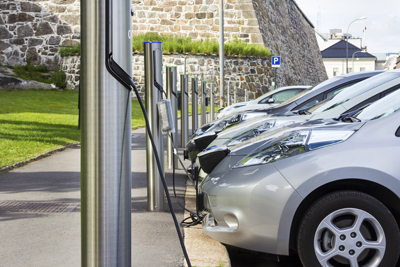Public charging is a common concern for new EV buyers and current owners alike, and local charging infrastructure can depend heavily on where a person lives. In a recent study, one organization looked at each U.S. state to assess the maturity of their local charging infrastructure, demonstrating some of the places where it may be easiest---and hardest---to own an EV.
In a joint study from research firm SBD Automotive and location-data company Here Technologies, researchers analyzed the number of public charging across all 50 U.S. states and the District of Columbia to determine which had the best and worst charging infrastructures, via Green Car Reports.
The research used data from Here’s EV Charge Points API and the U.S. Department of Energy’s Alternative Fuels Data Center (AFDC.)
The study looked at multiple categories of charger density from 2020-2022, including charging points per road length, average charging power, the state’s EV market share (2022 only), and the number of EV fleets per charging point. Using the category breakdowns, the two parties then assigned scores to states based on these factors.
Washington D.C. ranked first on the index, ahead of state leaders Connecticut, Vermont, Massachusetts, Maryland and Maine. Making up the rest of the top 10 states were New York, Colorado, Rhode Island and California.
The index also includes a simple infographic demonstrating the number of EVs per charging point in 2022. The graphic shows New Jersey as the charging density leader, with states including Florida, Texas, California and many others trailing just behind. Following the study, researchers suggest a rate of one public charger for every eight or nine EVs.
Most EV owners charge their vehicles at home, work or other consistent locations rather than at charging stations. However, anyone planning to use their EV on a road trip or a long commute may need regular access to public charging. With EV adoption rates rapidly increasing, public charging will need to follow to accommodate the increasing number of vehicles on the road---and to prevent current chargers from getting too full.
The study comes after several announcements of automakers switching from Combined Charging System (CCS) charging hardware to Tesla’s North American Charging Standard (NACS) plugs in the U.S. The shift will see vehicle manufacturers such as Ford, GM, Rivian, Honda and more building future cars with the NACS plug, some as soon as next year, which will also give them access to the Tesla Supercharger network.










Abby Andrews